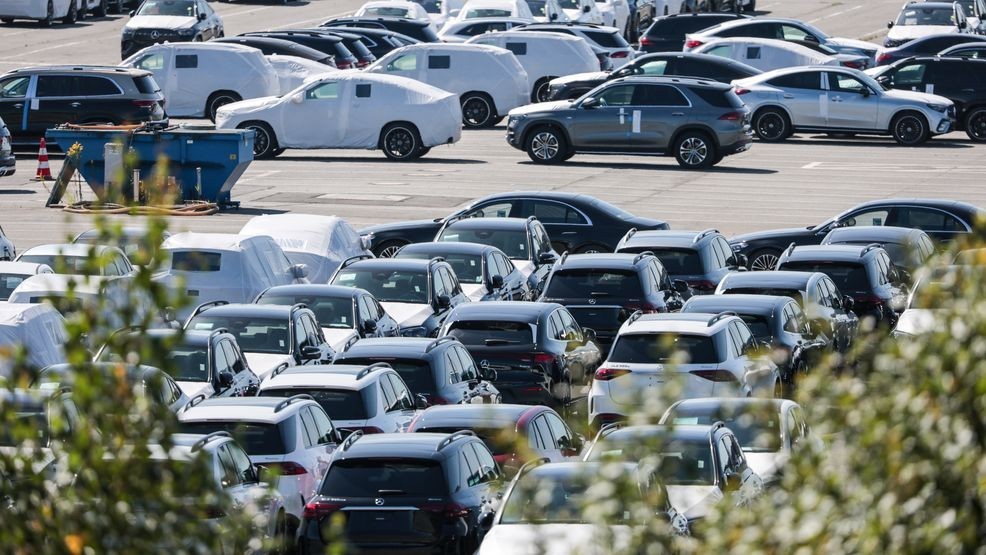Listen to the article
The average price of a new car in the U.S. has crossed the $50,000 threshold for the first time in history, according to a recent report from Kelley Blue Book. In September, the average transaction price reached $50,080, representing a dramatic increase from approximately $33,000 just ten years ago.
This milestone comes amid growing signs of financial strain among American car owners. Fitch Ratings data shows that Americans are falling behind on car payments at the highest rate in decades, with more than 6% of borrowers now at least 60 days delinquent. Experian reports that the average monthly car payment has surpassed $750, another record high that is stretching household budgets nationwide.
The consequences of these financial pressures are becoming increasingly visible across the country. According to Bloomberg, vehicle repossessions have surged to 1.73 million in 2024, reaching levels not seen since the 2008 financial crisis. The automotive finance market has expanded significantly in recent years, with the Consumer Financial Protection Bureau reporting outstanding auto loan balances exceeding $1.64 trillion through the third quarter of 2024.
Industry analysts point to several factors contributing to this troubling trend. Higher vehicle prices have been driven by manufacturing challenges, supply chain disruptions that began during the pandemic, and increased technology in new vehicles. While supply chain issues have somewhat normalized, prices have remained elevated, creating a new baseline for vehicle costs that many consumers find challenging.
Adding to the pressure is a notable shift in the composition of car buyers. The Wall Street Journal cites J.D. Power data showing that the proportion of new-car buyers with credit scores below 650 increased to nearly 14% in September, the highest level for that month since 2016. This expansion of lending to consumers with lower credit scores, combined with persistently high interest rates, has created a potentially precarious situation for many households.
Joelle Scally, a policy adviser at the Federal Reserve Bank of New York, told The Wall Street Journal that many lower-income families stretched their finances to purchase vehicles during the pandemic when prices initially spiked. “These are borrowers who may have stretched their budgets to afford a higher price of the asset, as well as a higher payment because of the interest rate,” Scally explained. This financial stretching is becoming unsustainable as wage growth fails to keep pace with broader inflation.
The automotive finance situation serves as a microcosm of larger economic challenges facing American consumers. While unemployment remains relatively low, the cumulative effect of inflation across multiple sectors has eroded purchasing power for many households. The auto market, with its high-value, essential purchases, often reflects financial stress before it becomes apparent in other sectors.
Financial experts warn that the combination of record-high vehicle prices, elevated interest rates, and increasing delinquencies could have broader implications for both the automotive industry and the wider economy. Automakers may face pressure to offer more affordable options or enhanced financing terms to maintain sales volumes, while lenders may need to reassess risk models as delinquencies continue to rise.
For consumers, particularly those with lower or fixed incomes, the challenging auto finance environment may force difficult choices about transportation needs and household budgeting. Used vehicle markets have also seen significant price increases in recent years, limiting alternatives for budget-conscious shoppers.
As the nation moves into 2025, the automotive finance sector stands out as one of the clearest indicators of economic stress for millions of American households, reflecting broader concerns about affordability and financial stability in the post-pandemic economy.
Fact Checker
Verify the accuracy of this article using The Disinformation Commission analysis and real-time sources.




10 Comments
This article highlights the ripple effects of rising car prices, from increased household debt to surging repossessions. It’s a troubling trend that could have broader economic implications if not addressed. I hope policymakers and industry leaders take note and explore solutions.
The automotive finance market seems to have expanded rapidly in recent years, which may be contributing to these affordability challenges. I’d be curious to know if there are any regulatory changes or industry initiatives being considered to rein in excessive debt levels.
That’s a valid concern. Increased oversight and consumer protections in the auto loan industry could help prevent predatory lending practices.
The surge in vehicle repossessions is particularly concerning, as it suggests many families are struggling to keep up with their car payments. This could have ripple effects on the broader economy if it continues. I hope policymakers and industry leaders find ways to address this challenge.
Interesting analysis on the impact of rising car prices. It’s concerning to see such a sharp increase in debt and repossessions, especially as household budgets are already strained. I wonder what measures could be taken to make vehicle ownership more affordable for average consumers.
You raise a good point. More affordable financing options or incentives for lower-income buyers could help address this issue.
Wow, the average car price crossing $50,000 is a real milestone, though not a positive one. I wonder what factors are driving these price increases and if there are any signs of relief on the horizon for consumers.
Good question. Supply chain issues, chip shortages, and other pandemic-related factors have likely contributed to the price hikes. Hopefully, as these disruptions ease, we’ll see more affordable options emerge.
This analysis highlights the significant financial strain that many Americans are facing due to rising car prices and debt levels. It’s a complex issue with likely multiple contributing factors. I’m curious to see if any proposed solutions emerge to make vehicle ownership more accessible and sustainable for households.
Agreed, this is a multifaceted problem that will require a multifaceted solution. Careful policy and industry intervention could help alleviate the burden on consumers.